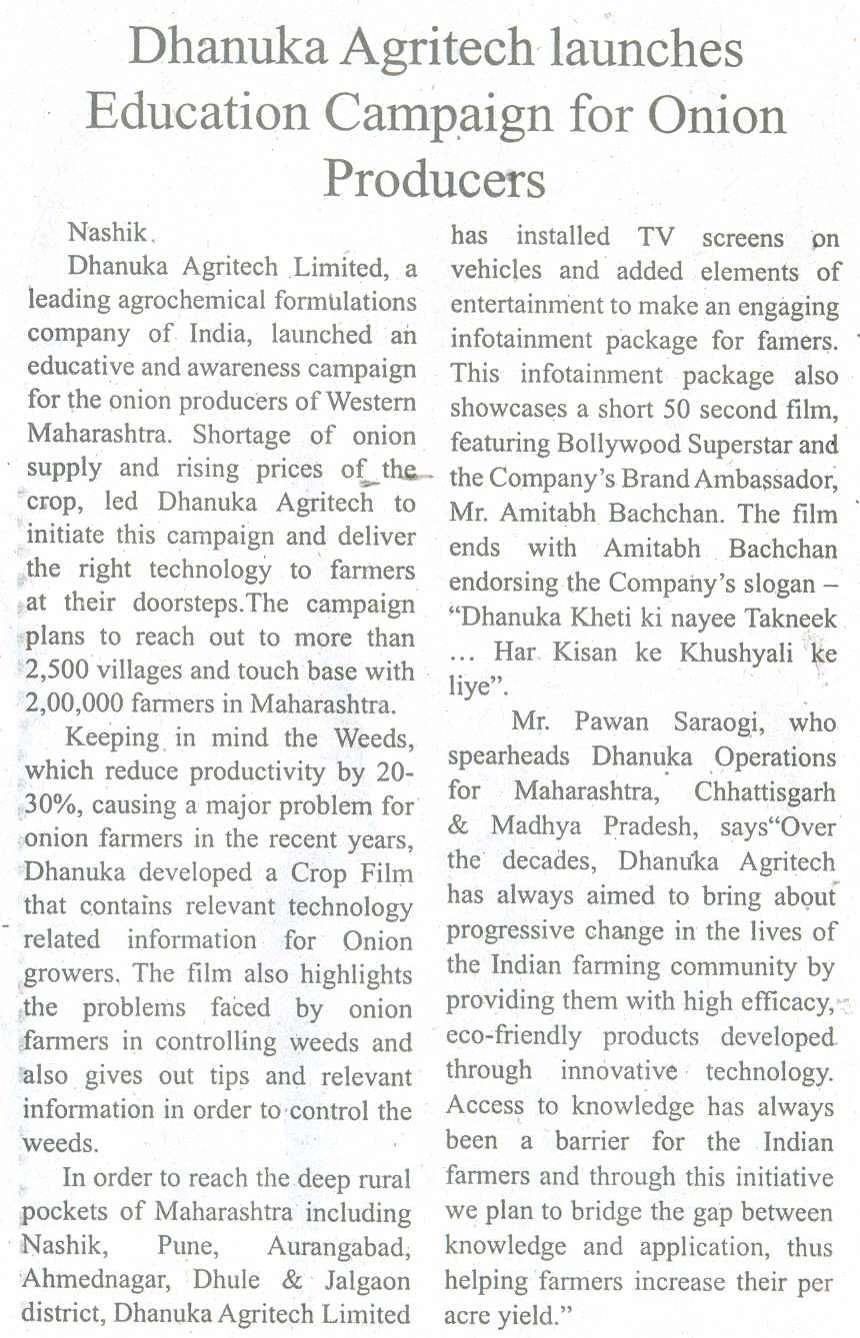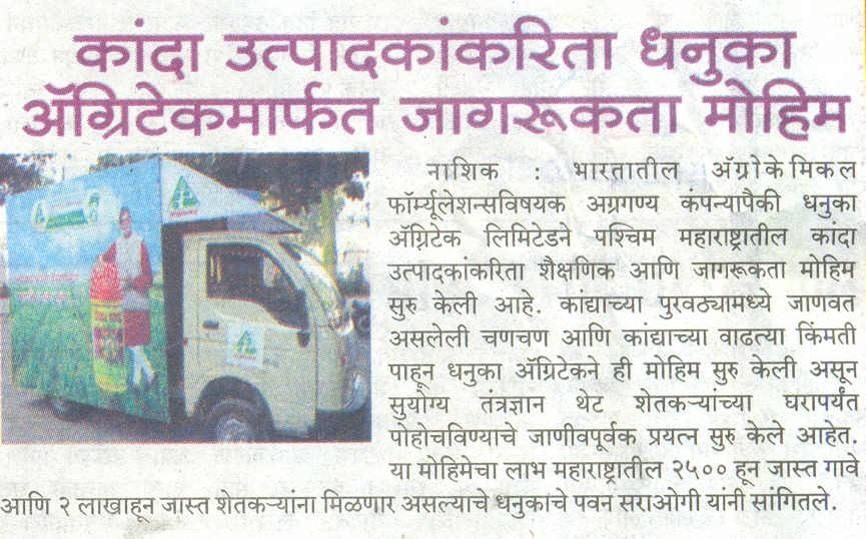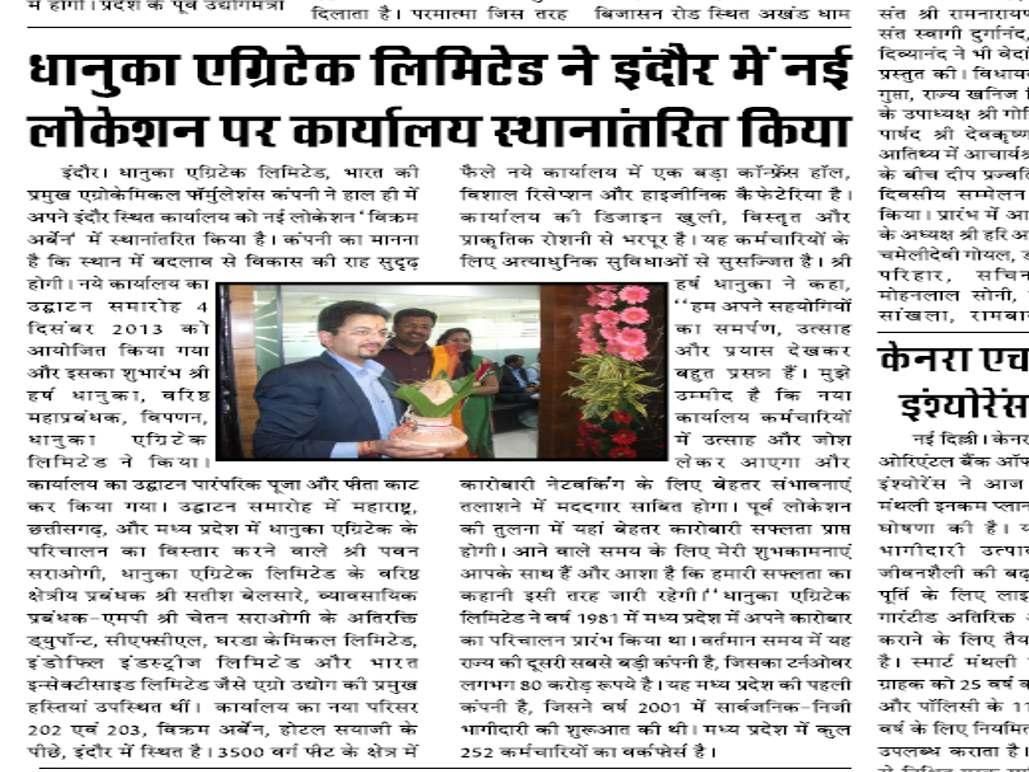NSE ●BSE ●
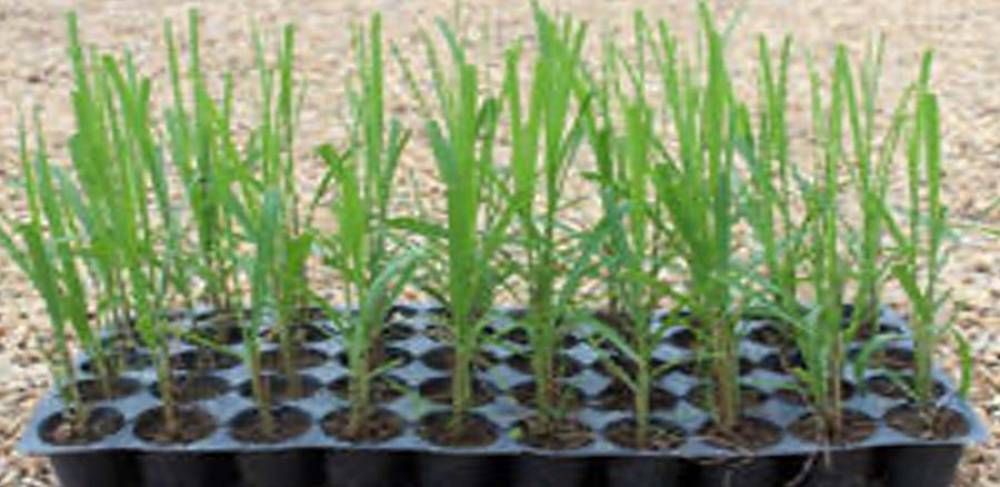
Sugarcane Cultivation – Package of Practice
04 Apr 2025
Sugar Industry in India is the second-largest agro based Industry, next to cotton. It caters to around 50 million farmers and their families. The Indian Sugar Industry consist of about 525 sugar mills, 200 distilleries and 260 cogeneration plants. Sugarcane is cultivated commercially in about 115 countries of the world, occupying 26 million hectare area with a total production of nearly 1900 million tons (FAOSTAT 2018)
Sugarcane is primarily used for sugar production but is also used as raw material for value-added products like feed, fibre and energy, especially bio-fuel and cogeneration. Ethanol production and cogeneration of electricity in sugarcane factories have enhanced the importance of sugarcane in the national economy. One sugar factory, on average, produces about 10.0 tons of raw sugar, 30.0 (range 27.0-33.0) tons of bagasse, 4.5 (range 4.0-5.4) tons of molasses, 3.5-3.9 tons of filter/press mud, 0.3 tons of furnace ash, 1200 (range 1125-1300) litres of alcohol by molasses route and 10,000 kW⋅h surplus electricity from every 100 tons of cane crushed (Sharma et al., 2015).
.table-range1 td{text-align: center;border: 1px solid #000;padding: 10px;vertical-align: middle;}.table-range1 tr { border: 1px solid #000;}.table-range1 th { border: 1px solid #000; padding: 10px; font-weight: 700;}@media screen and (max-width: 767px){p.BD_sec2_SubDesc.wow.fadeInUp { visibility: unset !important; animation-duration: 0s !important;}.scroll { overflow: scroll;}}
| States | Area million hectare (2018-19) | Percent Share | Number of Sugar Mills* |
|---|---|---|---|
| Uttar Pradesh | 2.22 | 43.49 | 117 |
| Maharashtra | 1.16 | 22.74 | 139 |
| Karnataka | 0.51 | 9.90 | 73 |
| Tamil Nadu | 0.16 | 3.23 | 41 |
| Gujarat | 0.17 | 3.27 | 21 |
| Bihar | 0.23 | 4.41 | 11 |
| Andhra Pradesh | 0.10 | 1.99 | 28 |
| Punjab | 0.10 | 1.86 | 17 |
| Haryana | 0.09 | 1.84 | 14 |
| Madhya Pradesh | 0.12 | 2.31 | 4+21 |
| Uttarakhand | 0.09 | 1.78 | 09 |
| Telangana | 0.04 | 0.78 | 09 |
| Rest of India | 0.12 | 2.41 | - |
| All India | 5.11 | 100.00 | - |
Source- Directorate of Economics & Statistics DAC&FW, Agricultural Statistics. At a glance, 2019, *STAI, 2019-2020
There are two distinct agro-climatic regions of sugarcane cultivation in India, viz., tropical and subtropical. The tropical region consists of about 45% area, and the sub-tropical region accounts for 55% sugarcane area. Approximately 80% of sugar is obtained from sugarcane, and the remaining 20% is produced through sugar beet.
Geographical Condition - Sugarcane is mainly grown in two Zones
• Tropical & Sub-tropical
• Tropical zone covers Andhra Pradesh, Gujarat, Karnataka, Madhya Pradesh, Maharashtra, Orissa and Tamil Nadu.
• Sub-tropical zone covers Bihar, Haryana, Punjab and Uttar Pradesh
Tropical region
In the tropical region, sugarcane gets ideal climatic conditions for its growth and development throughout the year. Maharashtra and the adjoining areas of Karnataka, Gujarat and Andhra Pradesh record higher sugar recovery due to long sunshine hours, cool nights with clear sky and the latitudinal position of the area favourable for sugar accumulation.
Sub-tropical region
Uttar Pradesh (U.P.), Bihar, Haryana and Punjab states face the extremes of climate viz., high and low temperatures, relative humidity, sunshine hours and wind velocity etc. Uttar Pradesh has the maximum area under sugarcane cultivation. Climatic conditions generally vary depending upon the seasons and sometimes within the season also. Sugarcane crop faces all the seasons in a year. From April to June, the weather is very hot and dry. July to September is the rainy season. October to January are cold months.
Soil requirement of sugarcane
In general, the sugarcane crop requires a well prepared, well-structured, well-drained and adequately aerated soil profile to a depth of at least 40 to 60 cm without compaction, hardpan, lime band or salt zone in the subsoil. Sugarcane can be grown in all types of soils ranging from sandy loam to clay loam. Saline, alkaline and acidic soils are not at all suitable for sugarcane. Soil pH plays a major role in cane cultivation. The salt concentration of soil is expressed in terms of electrical conductivity (EC), which should not exceed 4 m. mhos/cm. If the Sodium content is more in the soil, the availability of Potassium and Magnesium to plant is drastically reduced leads to a lower yield. Internode elongation and tillers are reduced in acidic soil (pH 5.6). In alkaline soils (pH 8.0), growth and tillers become poorer than in the neutral soil but better than acidic soil.
.table-range2 td{text-align: left;border: 1px solid #000;padding: 10px;vertical-align: middle;}.table-range2 tr { border: 1px solid #000;}.table-range2 th { border: 1px solid #000; padding: 10px; font-weight: 700;}
| SN | Nutrients | Low | Medium | High |
|---|---|---|---|---|
| 1 | Organic carbon (%) | Less than 0.5 | 0.5-0.75 | More than 0.75 |
| 2 | Available nitrogen (kg/ha) | Less than 280 | 280-560 | More than 560 |
| 3 | Available phosphorus (kg/ha) | Less than 10 | 10-24.6 | More than 24.6 |
| 4 | Available phosphorus (kg/ha) | Less than 108 | 108-180 | More than 180 |
Major nutrient fertilizer recommendation as per the soil status:
.table-range3 td{text-align: center;border: 1px solid #000;padding: 10px;vertical-align: middle;}.table-range3 tr { border: 1px solid #000;}.table-range3 th { border: 1px solid #000; padding: 10px; font-weight: 700;}
| Planting season | Low | Medium | High | ||||||
| Nitrogen (kg/ha) | Phosphorus (kg/ha) | Potash (kg/ha) | Nitrogen (kg/ha) | Phosphorus (kg/ha) | Potash (kg/ha) | Nitrogen (kg/ha) | Phosphorus (kg/ha) | Potash (kg/ha) | |
| Autumn | 200 | 80 | 60 | 178 | 60 | 40 | 90 | - | - |
| Spring | 180 | 80 | 60 | 160 | 60 | 40 | 80 | - | - |
Co-efficient factors for conversion in fertilizer:
.table-range4 td{text-align: left;border: 1px solid #000;padding: 10px;vertical-align: middle;}.table-range4 tr { border: 1px solid #000;}.table-range4 th { border: 1px solid #000; padding: 10px; font-weight: 700;}
| Fertilizer | Nutrients | Coefficients |
|---|---|---|
| Amount of Urea | Nitrogen | 2.2 |
| Amount of SSP | Phosphate | 6.0 |
| Amount of Meurate of Potash | Potash | 1.7 |
Planting Seasons:
.table-range5 td{text-align: left;border: 1px solid #000;padding: 10px;vertical-align: middle;}.table-range5 tr { border: 1px solid #000;}.table-range5 th { border: 1px solid #000; padding: 10px; font-weight: 700;}
| States | Area (Lakh hectare) | Main Planting Season |
|---|---|---|
| Uttar Pradesh | 22.2 | EUP- Oct. – Nov 15% |
| EUP Feb. – March - 80% | ||
| EUP April -5% | ||
| WUP – Oct. – Nov. - 10% | ||
| WUP Feb. – March - 15% | ||
| WUP April - 75% | ||
| Punjab | 1.0 | Feb. – March 75-80% |
| Sep. – Oct. 20% | ||
| Haryana | 0.9 | Mar. - Apr. - 70% |
| Feb. – March - 30% | ||
| Bihar | 2.3 | April 70% |
| Feb.- March - 30% | ||
| Gujarat | 1.7 | Sep. – Nov. 90% |
| Dec. – Jan 10% | ||
| Maharashtra | 11.6 | July – Oct. 75% |
| Dec. – March 25% | ||
| Karnataka | 5.1 | May – June 50% |
| Oct. – Nov. 30% | ||
| Jan. – Feb. 20% | ||
| Tamil Nadu | 1.6 | Dec. - Feb. 75% |
| March - April 25% | ||
| Andhra Pradesh | 1.0 | Dec. - Jan. 70% |
| Feb. - March 30% |
The sugarcane crop requires 10-18 months for its maturity in India. Generally, a 12-month crop duration is most common. The weather conditions govern the time of planting. In India, sugarcane planting is done during other months, called planting seasons.
In subtropical India
Planting seasons are autumn (September-October), spring (February–March), and summer (April-May). Late planting is common in western Uttar Pradesh, where sugarcane is planted after wheat harvest. It has been observed that autumn planting covers only10- 12% area of sugarcane in north India. A larger share lies in spring/summer, depending upon the cropping systems followed.
In Peninsular India
Planting is done in January-February, known as spring-planted crop, Suru in Maharashtra and Eksali in Gujarat and Andhra Pradesh. Autumn Planting in the Peninsular zone is done during October-November. Autumn planting is also known as Pre-seasonal planting in Maharashtra and Gujarat. The pre-seasonal crop matures in13-15months, and sugarcane is supplied during the early crushing period. Adsali planting is preferred in Maharashtra and Karnataka and done during July-August, and the crop matures after16-18months. There is an increase in yield as well as sugar recovery because of the extended growing season. The most significant advantage of Adsali is that it passes through only one summer season. In the present scenario, the area under Adsali planting is declining because of the less availability of irrigation water.
Field Preparation
Sugarcane crop stands in the field for more than a year; it is necessary to give deep ploughing by mouldboard plough drawn by a tractor. The proper time for ploughing is immediately after the preceding crop is harvested or just after a good shower of rain is received. The land is then exposed to the atmosphere for a month. The harrowing is done 3 to 4 times to break clods, make the ground smooth, and even facilitate uniform irrigation. Four to Six ploughings to produce good tilth is recommended. Each ploughing should be followed by planking. Cross Sub Soiling is an advanced method of field preparation for sugarcane cultivation. The cross subsoiling at 1.0 m spacing should be done once three to four years before preparing the field. A tractor-drawn sub-soiler does this to the depth of 45-50 cm. Do planking to break the clods and then prepare the seedbed. This will help break the hardpan, help in increasing water infiltration rate and better penetration of sugarcane roots.
Planting techniques
Sugarcane requires about 25-32 degrees C temperature for germination. This temperature requirement is met twice in north Indian conditions, i.e., in October and February-March. Autumn planting of sugarcane is done in October. Spring cane is planted in the month of February-March. March is the best time for cane planting in Punjab and Haryana, February-March in Uttar Pradesh and January-February in Bihar. The planting time is advanced as we move towards the east.
In Tamil Nadu, Andhra Pradesh, Maharashtra and Karnataka, sugarcane planting is done in December-February. Adsali planting in Maharashtra is done during the July-August months, and crop duration is about 15-18 months. Eksali planting is common in south India. The crop is planted during January-February and harvested after one year.
Typically following sugarcane planting methods are adopted in India:
1. Flat Planting Method
This is the simplest and cheapest method of planting. This method is usually adopted in low rainfall areas of India (in most parts of northern India and some parts of Maharashtra). In this method, shallow furrows (8-10 cm deep) are opened with a country plough or tractor operated furrow opener at a distance of 75- 90 cm. The cane sets are planted end-to-end, taking care that 3-budded sets fall in each running 30 cm length of the furrow. After planting, the furrows are covered with 5-7 cm soil, and the field is levelled by heavy planking. There must be adequate moisture in the field at the time of planting. After germination, three to four inter-cultures are recommended at a proper interval to control the weeds and facilitate tillering.

2. Ridge and Furrow Method
This method is usually adopted in areas of moderate rainfall having drainage problems. In this method, the furrows are made in a 'V' shape about 90 cm apart and 20-25 cm deep. The sets are placed in a horizontal position, usually with an end-to-end system. If the seed stalk is not healthy and internodes are longer, an eye-to-eye planting system may be adopted. As soon as the canes start growing, the furrows are partly filled with soil, and inter-row cultivation is carried out. This repeated row cultivation of cane results in levelling of the land by the end of May or mid-June, which is known as the first earthing-up.
Further, repetition of inter-row cultivation transforms the furrow into ridges by putting soil around the plants. Inter-row space automatically becomes furrow, through which irrigation or drainage is provided for the growth and development of the crop. The transformation of furrow into ridges is known as second earthing-up.
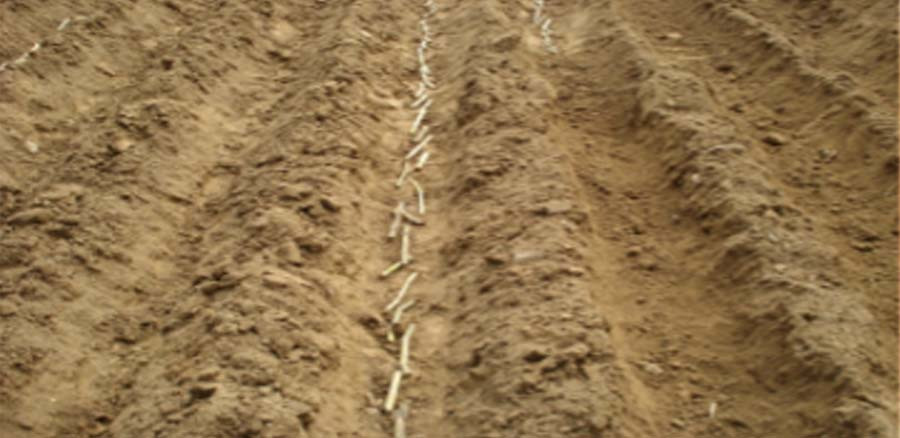
3. Trench Method
Trenches are dug at a distance of 75-90 cm, with the help of a ridger or by manual labour. The trenches should be about 30 cm deep. The mixture of fertilizers (NPK) should be spread uniformly in the trenches and mixed thoroughly in the soil. The sets are planted end to end in trenches. Drenching of setts with chlorpyriphos 20 EC (1 kg a.i./ha or 5 litres/ha) to protect from soil-borne insects is required. The trenches are filled up with loosened soil after planting.

4. Poly Bag Technique
Disease-free sets are selected from the seed nursery. Single bud sets are cut manually, dipped in 0.1% Carbendazim for 5 minutes and then planted in perforated poly bags (12 x 8 cm) filled with 1:2:5 mixtures of sand, soil and FYM. The settlings can be used for gap filling in ratoon and plant crops. As there is no damage to the root system, field mortality of settlings is very low (5%).
Polybag technique is a rapid method for seed multiplication of desired variety in less time than conventional methods. In polybag raised plantlets, more tillers and millable canes are formed. Polybag raised seedlings can be used in waterlogged areas. It is an accessible technology that the farmers can adopt.

5. Bud Chip Technique
In this method, the nursery is prepared using bud chips, and settlings are transplanted in the main field—select disease-free canes from the seed nursery. Take out the bud along with a portion of the nodal region using the bud chipping machine. Only 15 quintals of bud chips are required for planting in one hectare. The remaining part of the stalk can be sent for milling. Treat the bud chips in chlorpyriphos (2 ml/litres of water) + Carbendazim (2 g/litres of water) for 5 minutes and incubate in a moist gunny bag overnight (priming).
Prepare a homogeneous mixture with an equal quantity of soil, sand and FYM, fill in perforated polythene bags or cavity trays, plant the bud chips in an upright position facing the bud up, cover it with soil mixture. Provide regular watering with Rose Can and spray 1% urea solution on 15th and 25th days after planting. The seedlings are ready for transplanting at 6-8 weeks. The survival rate of settling in the field would be high as it is transplanted along with a ball of earth. Bud chips are easy to transport for long-distance. There is a saving of seed cane (quantity and cost) and 6-8 weeks' time. The higher survival rate after transplanting, uniform tillering, and higher yield is achieved by planting bud chips.







